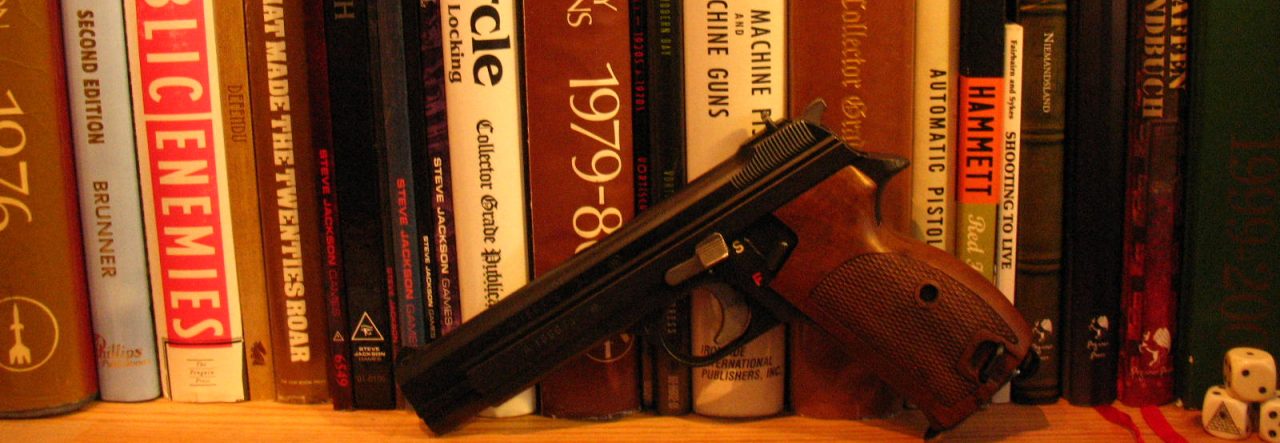Part of Lovecraft’s Investigators and Their Guns.
(set in 1926, written in 1926, published in 1927)
He drew a revolver and motioned me to silence, then stepped out into the main cellar and closed the door behind him … After that followed a sharp grating noise, a shouted gibberish from Pickman, and the deafening discharge of all six chambers of a revolver, fired spectacularly as a lion-tamer might fire in the air for effect. A muffled squeal or squawk, and a thud. Then more wood and brick grating, a pause, and the opening of the door – at which I’ll confess I started violently. Pickman reappeared with his smoking weapon, cursing the bloated rats that infested the ancient well.
We can assume from the fact that Richard Pickman was an artist and an urbanite that he carried the weapon concealed, and from this that it was probably a small pocket revolver. It was most likely not a .22-calibre weapon, since most of the pocket revolvers in that calibre had seven rather than six chambers at the time. That suggests a revolver in .32- or .38-calibre, most likely a Colt, since most other pocket offerings in those calibres had only five chambers. It was almost certainly a double-action gun due to the timeframe and of course the quick rate of fire.

Likely contenders include the Colt Pocket Positive in .32 S&W Long (7.9×23mmR) with a 6.35-cm (2.5”) barrel, the Colt Police Positive in .32 S&W Long or .38 S&W (9×20mmR) with a 6.35-cm barrel, or the Colt Police Positive Special in .38 Special (9×29mmR), which became available with a 5-cm (2”) barrel in 1926 before being renamed the Detective Special in 1927 (Investigator Weapons 1: The 1920s and 1930s, pp. 36-37). Other options include the S&W Hand Ejector in .32 S&W Long with an 8.25-cm (3.25”) barrel or the H&R American Double Action in .32 S&W Long with a 6.35-cm barrel.
We can also conclude that Ghouls can be wounded or even killed with bullets, since at least one “squeals” when hit and then falls to the ground with “a thud.” We never see this effect, of course, just as Lovecraft denies us to take part in the action first-hand. Note that this contradicts the Ghoul description in the rules (Call of Cthulhu, Sixth Edition, p. 160, and Call of Cthulhu, Seventh Edition, pp. 294-295), according to which firearms do only half damage. Using a wimpy .32- or .38-calibre pocket revolver on such creatures borders on the suicidal ‒ but then, Pickman did fire all six shots …
